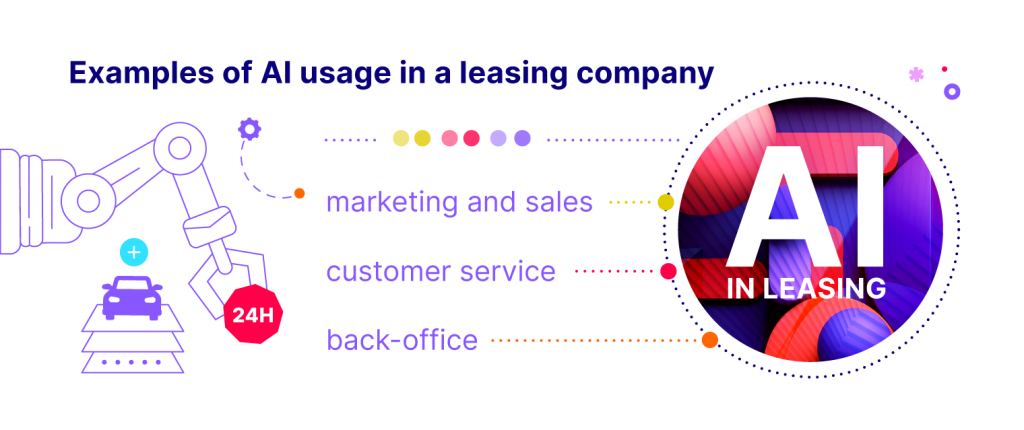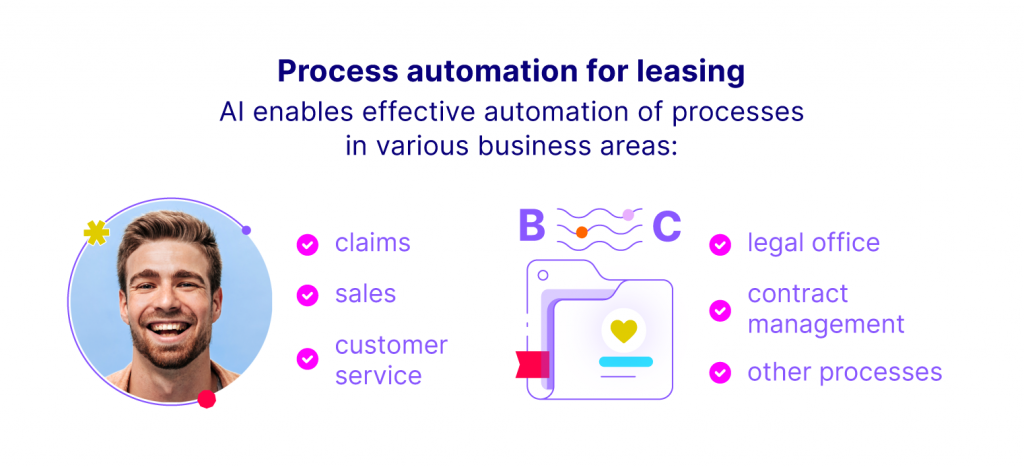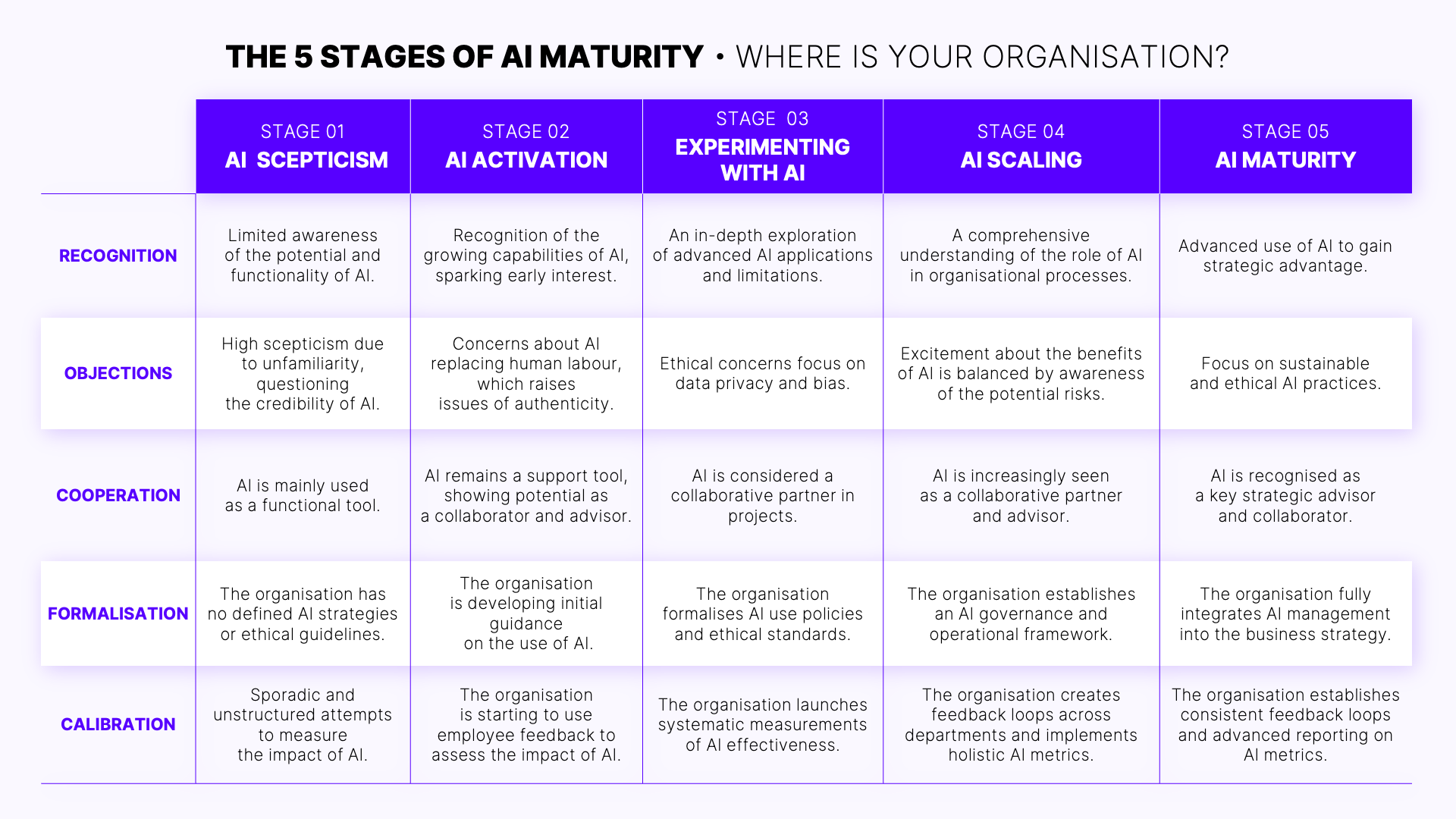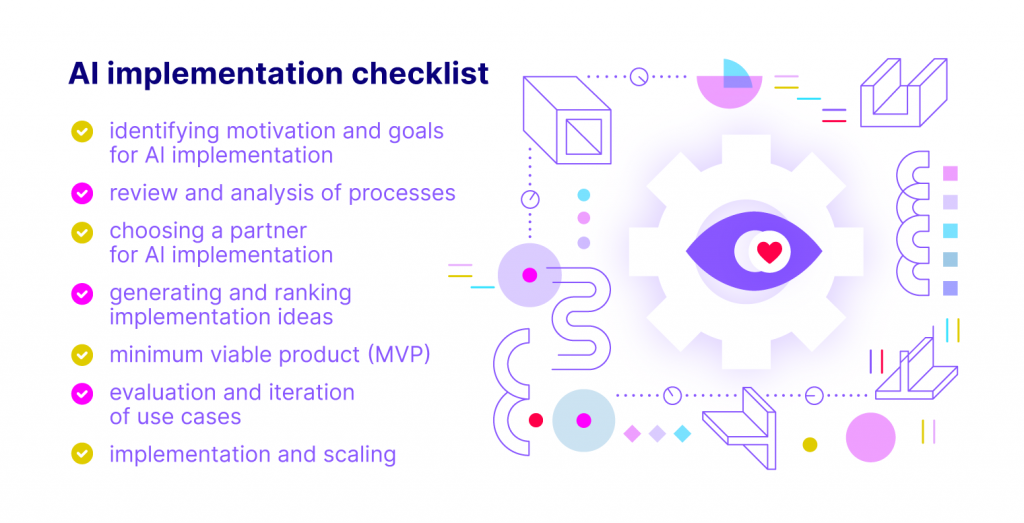How can Artificial Intelligence enrich leasing processes?
- 02.12.2024
- 8 min
Artificial intelligence has recently caused a huge revolution in the market. The leasing industry, as one of the branches of the financial sector, is able to automate a number of business processes with AI while remaining compliant with regulations. Although the leasing industry itself is not as tightly regulated as banks, which are often the parent companies of leasing companies, the implemented international regulations and those resulting from the internal procedures of banking groups affect the leasing industry itself - imposing its own AI governance on the financial sector. In this post, you will learn how artificial intelligence can effectively enrich leasing processes.
The potential of artificial intelligence to improve business processes
The changes occurring due to artificial intelligence entering the market have been discussed for quite some time. The market is changing rapidly, with the number of software applications available exceeding our wildest expectations—from text, graphics, or video applications to takeaways that help us with data processing or coding.
Why bet on AI? In an article on the generative AI revolution, McKinsey Digital reports that based on their own experience working with companies, around 10 to 20 per cent of programming activities are supported through AI tools. Furthermore, according to Capgemini, the synergy of data analytics and BPA (Business Process Automation) improves decision-making processes, reducing by 50 per cent the time required to make informed choices. According to a Gartner report, integrating hyper-automation technology with improved operational procedures could reduce operational expenses by up to 30% by 2025.
These figures speak for themselves, and the growing number of emerging solutions suggests that AI is not to be feared. Harnessing this potential and transforming your organisation is essential.
Ways to use AI in a leasing company
How do we use AI in a leasing company? There are three main categories and areas where implementing this technology will benefit your employees:

Artificial Intelligence has a number of applications in marketing: creating marketing content, personalising ad content for a particular segment, summarising long documents, automating emails, preparing product descriptions, generating scripts for the sales team or even selecting content for presentations.
Regarding customer service, it can help in areas of case handling that would normally take up a lot of staff time. A multilingual assistant will perform repetitive tasks while reducing the cost of translations. In addition, sentiment and quality of service can be assessed, and the ‘next best action’ can be determined.
Meanwhile, intelligent document processing, generating content for a knowledge base, summarising reports, extracting information from documents, and classifying them are some possible examples of AI's application and use in back-office processes.
Of course, Artificial Intelligence should not be trusted unreservedly, but it is worth using it for inspiration.
Automation of the leasing process
Given the benefits we can provide to an organisation by implementing AI, it is worth considering applying it to your processes. However, what do you need to keep in mind before you decide to implement? In order to correctly define your target AI automation, it is useful to approach the process in several steps, starting with a focus on strategy.

We suggest considering a three-step approach to implementation:
- As-is analysis, i.e., identifying and collecting information on current processes, focusing on data processing, exchange, and analysis. This analysis uses the materials provided and additional workshops and interviews.
- To-be analysis involves gathering the key business, functional, technical, and security requirements for the AI solution to be designed. At this stage, you should also define the target architecture.
- Timetable and pricing - i.e. defining a roadmap and initial implementation schedule with initial pricing of individual components.
Stages of AI maturity
Once you have defined these processes, we suggest you reflect on and trace the five stages of AI maturity. This will allow you to answer the question of which one your organisation is at.
These stages are scepticism, AI activation, AI experimentation, AI scaling, and AI maturity.

Once you have analysed all the steps, it is essential to plan your AI implementation step by step. This will enable you to maximise the technology's potential while maintaining a smooth process.
Step 1: Identify motivations and objectives for implementing AI
The first step is to identify the motivations and objectives for implementation. Consider the business motivation and what precisely you want to achieve. This could improve efficiency or optimise a specific process, such as improving the claims process. Next, we define the goal of the implementation - we specifically state that we want to shorten the complaints process. In the final step, we establish success indicators (KPIs) by which we will assess the effectiveness of the implementation, e.g. a 30% reduction in the complaints process.
Step 2: Review and analysis of processes
In this step, you should look at the most relevant processes in the organisation in the departments concerned, i.e. marketing, sales, customer service, order processing, finance or HR. Then you need to highlight the biggest ‘pain points’, i.e. the processes that need to be optimised. Only after these steps, can you move on to evaluating the available technologies and selecting which ones will meet your specific needs and provide the best support.
Step 3: Selecting a partner to implement AI
Choosing a partner can be one of the most critical decisions. It needs to be someone with knowledge and experience gained from working with the leasing industry. Many companies, despite having a background in technology, may find it challenging to understand the specifications and rules of the leasing industry. Therefore, this is an essential stage during which an in-depth review of suppliers, their offers, experience, references and ability to deliver personalised solutions should be performed.
If you are looking for a proven technology partner in the leasing industry, do not hesitate to contact us.
Step 4: Generation and ranking of the ideas for implementation
Once we have a picture of what we want to automate, have analysed and reviewed the processes and verified the suppliers, the focus should be on developing ideas for using AI based on the points identified earlier. At this stage, it is also necessary to initially assess the feasibility of our ideas and prioritise and analyse the benefits behind the use case.
Step 5: Minimum Viable Product (MVP)
Minimum Viable Product (MVP), is a product in the early stages of development. At this stage, we select the highest-priority use cases for pilot implementation, define success indicators (KPIs), and set target values for each MVP. Then, we test the artificial intelligence models to a limited extent to assess their effectiveness and scalability.
Step 6: Evaluation and iteration of use cases
Once you have tested the models, it is time to evaluate the MVP's performance, which is carried out based on the KPIs defined in the previous stage. That is also the ideal time to observe and identify areas to improve and strengthen our chosen AI model.
Step 7: Implementation and scale-up
The final step is to implement and scale those cases that have succeeded in the MVP stage. Setting up an AI Centre of Excellence is essential to serving, helping manage, and optimising processes. Once implemented, remember to continuously monitor the processes and integrate them into the organisation's day-to-day operations.

AI is nothing without people – automate, don't dehumanize
Employees' fear of potentially losing their jobs resonates in discussions around artificial intelligence. However, it is essential to remember that AI is there to help and support people in working more effectively. When planning a strategy for introducing AI into an organisation, it is crucial to remember those who make it happen.
Training and competence development
Anything new can seem intimidating and cause people to feel reluctant and resistant. Implementing AI requires intensive training to give employees a thorough understanding of the technology.
Once familiar with it, it ceases to be a threat, and we begin to see it as an opportunity to plan and execute our work more efficiently. Implementing AI is a process that takes time and effort. The company should regularly adapt the tools and provide ongoing support to employees to get the most out of the technology.
Managing expectations and emotions
Since so many applications can generate text or process data, it seems natural to fear losing one's job. Again, the employer must manage the team's emotions, communicate the benefits, and be transparent about the technology's implementation and the process.
Establishing a culture of innovation
Companies should foster an atmosphere of innovation where employees feel comfortable testing new AI tools and solutions. Promoting a 'test and learn' approach is vital, and understanding that mistakes are part of the process often helps to learn more than immediate success. One has to set oneself up for the fact that developing patterns that are good for a particular team or process may not be easy, but it is undoubtedly rewarding. It will ultimately bring results for the organisation.
Supporting, not replacing employees
AI should facilitate work by automating repetitive tasks but not replace employees. Technology can ease the burden on teams, allowing them to focus on tasks that require creativity and human interaction. It is also worth basing the introduction of innovation and technology on the real needs of employees. If we want to make their work easier, let's involve them, which will help us better understand their needs, make it easier to adapt to the solution and increase our chances of success.